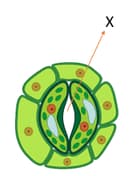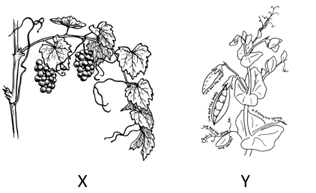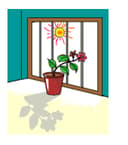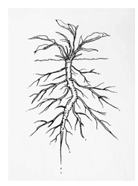EASY
6th Foundation
IMPORTANT
Earn 100
Match column I with column II and select the correct option from the given codes.(
Column I
Column II
(a)
Hinge joint
(i)
Neck joint
(b)
Gliding joint
(ii)
Hip joint
(c)
Pivot joint
(iii)
Knee joint
(d)
Ball and socket joint
(iv)
Wrist joint
(A) (a)- iii, (b)- iv, (c)- i, (d)- ii
(B) (a)- iv, (b)- i, (c)- iii, (d)- ii
(C) (a)- i, (b)- ii, (c)- iv, (d)- iii
(D) (a)- ii, (b)- iii, (c)- i, (d)- iv
(a)(A)
(b)(B)
(c)(C)
(d)(D)
25% studentsanswered this correctly

Important Questions on The World of Living
EASY
6th Foundation
IMPORTANT
Read the following statements, each with one or two blanks.
(i) __ have liquid skeletons.
(ii) The last __ pairs of ribcage bones that are not joined to the breastbone are called __ .
(iii) The longest bone of human body is __ .
(iv) __ is strong, flexible band that holds bones together at the joints.
(v) __ is a smooth elastic tissue that covers and protects the ends of long bones at the joints.
Which of the following options correctly fill any two of these blanks?
EASY
6th Foundation
IMPORTANT

EASY
6th Foundation
IMPORTANT

EASY
6th Foundation
IMPORTANT

EASY
6th Foundation
IMPORTANT
EASY
6th Foundation
IMPORTANT

(i) It is a fibrous root system.
(ii) The branches that arise from the main root are called fibrous roots.
(iii) It is a taproot system.
(iv) Examples of this type of root system are pea, tulsi, radish, carrot, and turnip.
EASY
6th Foundation
IMPORTANT
Which of the given points is/are incorrect?
| Feature | Herbs | Shrubs | Trees | |
|---|---|---|---|---|
| (i) | Size | Very small, usually less than high | Medium sized, usually m high | Tall, generally more than high |
| (ii) | Nature of stem | Green and tender stems with few branches | Hard and very thick stem with branches on the upper part of the stem | Hard stem but not very thick; branches arise near the base of the stem |
| (iii) | Examples | Grass, tomato, wheat, mint | Hibiscus, lemon, rose, jasmine | Gulmohar, neem, peepal, mango |
EASY
6th Foundation
IMPORTANT

What is a common character of the above shown animals?
